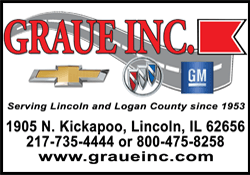No pain, no gain? Hardly. This year's fitness buzzword is 'recovery'
 Send a link to a friend
Send a link to a friend
 [February 20, 2025]
By ALBERT STUMM [February 20, 2025]
By ALBERT STUMM
If you ever turned on the TV in the 2000s after midnight, you might have
seen an informercial for P90X.
The exercise program promised shredded abs and bulging biceps for anyone
who pushed themselves to their limits for 90 days of 90-minute workouts.
So it may come as a surprise that its creator, Tony Horton, now preaches
the benefits of rest and warns against overtraining.
“I didn’t know then what I know now,” said Horton, who had spent the
’90s training celebrities. “Back then it was all about warm-ups and
cool-downs, and telling them to eat better and get off the hooch.”
His evolution reflects a broader shift in the exercise industry away
from a “no pain, no gain” mentality that once dominated but often led to
injury. Instead, the current buzzword in fitness is “recovery.”
Horton — who at 66 still exudes a boyish exuberance — noted that P90X
did include recovery days with stretching and low-impact movement such
as yoga. But these days, he prioritizes mindfulness as much as exercise,
and the time between workouts is filled with plenty of good sleep,
plunges in frigid water baths, using foam rollers on tight muscles,
relaxing in a sauna, and other activities in the name of recovery.
“If you don’t get the recovery and the rest part right, then you’re
never going to be able to be consistent with the fitness end of things,”
Horton said.
A more holistic approach to exercise
Before Horton, Jane Fonda had pushed home exercisers to “feel the burn,”
while bodybuilders lifted weights to the point of muscle failure. Now,
the American College of Sports Medicine and the National Academy of
Sports Medicine, two of the largest organizations certifying personal
trainers, emphasize recovery methods.

NASM’s “Fitness and Wellness” certification includes training in
“holistic health and wellness including physical, mental, social and
emotional well-being.”
The industry has learned from research that shows the benefit of proper
rest, said Stan Kravchenko, founder of the OneFit personal training
platform. During deep sleep, the body repairs muscle tissue, and studies
show that well-rested people perform better and are less likely to get
injured.
But rest is only part of recovery. Kravchenko said personal trainers
used to focus only on specific exercises a client could do during their
workout. Now, they’re more like life coaches who also give exercise
advice.
“It’s more about your lifestyle, how you eat, how you sleep,” he said.
“Are you stressed? What do you do for living? Are you working from a
desk? So it’s taking a little bit more like a broad approach.”
Discomfort — but not pain — still has a place
The “no pain, no gain” motto is great for athletes who can handle
intense workouts and are looking to get stronger, but not everyone needs
to push themselves that hard, Horton said. It depends on the goal.
[to top of second column]
|

A man jogs through a park in Montreal, Wednesday, Jan. 8, 2025. (Christinne
Muschi/The Canadian Press via AP, File)
 Michael Zourdos, chair of exercise
science and health promotion at Florida Atlantic University, said
lifting weights “until failure” may build bigger muscles, but isn’t
needed to increase strength. “There is a difference between training
for health and training for elite performance benefits,” he said.
To realize the health benefits of a workout, it’s still necessary to
push yourself, Horton said: “In the muscles, the lungs, your heart,
there’s gotta be a certain amount of strain.”
There is a big difference, however, between discomfort and acute
pain. If discomfort crosses into sharp pain in joints, tendons or
muscles, stop that movement.
How long do muscles need to rest after a workout?
People’s needs vary depending on their goals and bodies. But
Kravchencko offered a few general guidelines:
For lifting weights, he recommends allowing 48 hours of recovery
time per muscle group, and doing a maximum of 10 sets per muscle
group per week. During the workout, he said, it’s best to rest for
two to three minutes between sets, as opposed to old advice to wait
only a minute before exercising the same muscles.
In between workouts, it’s not necessary to stay still.
“You’re welcome to do walking, jogging, very light yoga, stretching,
pilates, core exercises,” Kravchencko said. “That’s all fine,
because it’s not specifically targeting the areas you’ve targeted
before.”
Mindfulness as exercise recovery
Horton and Kravchencko both mentioned a recovery practice not
typically associated with weightlifting — meditation. Taking a few
quiet minutes every morning helps you deal with the physical and
emotional stress of life that can get in the way of wanting to
exercise, they said.
Horton recommends establishing a mindfulness routine even before
formalizing an exercise plan because it will lay the groundwork to
be consistent.
“What is your strategy to get to get healthy and to get fit and to
stay that way?” he said. “A lot of it has to do with letting the
pendulum swing the other way.”
___
AP reporter Maria Cheng in London contributed to this story.
All contents © copyright 2025 Associated Press. All rights reserved
 |